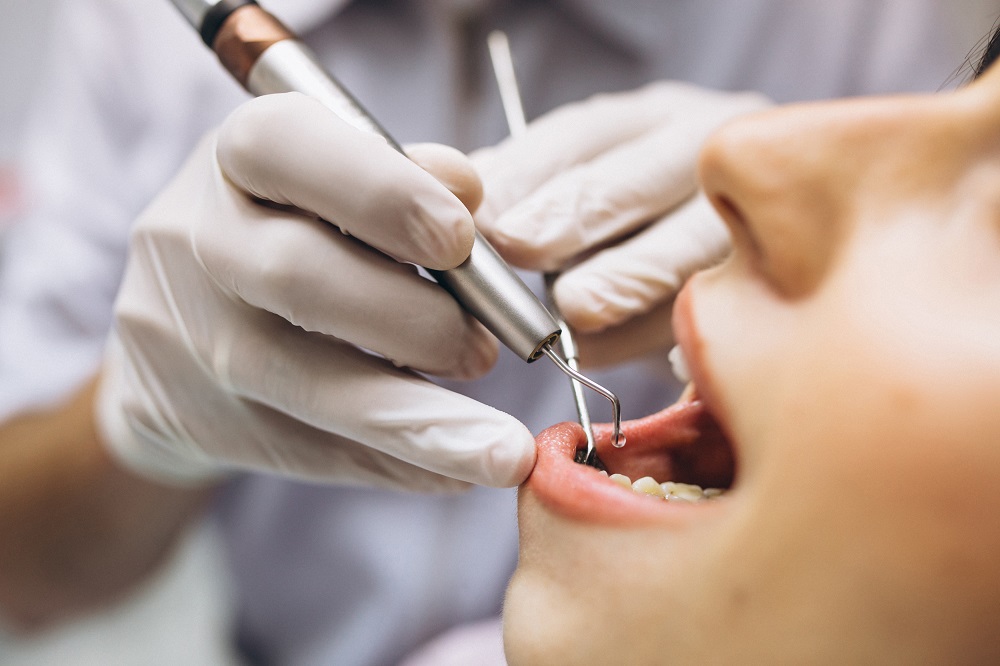Most people fear the prospect of a root canal because they hear the pain is intense and unbearable. While that may have been true for past patients, things have changed thanks to advancements in our dental techniques and technology.
Root canals are ultra-common and necessary to preserve teeth ridden with infection and decay. But what is a root canal, and why might you need one?
Inside your teeth is a soft tissue called the pulp underneath the enamel and dentin. This tissue has nerves, connective tissue, and blood vessels that aid in your tooth’s root growth. When this pulp succumbs to infection, we recommend root canals to prevent losing the tooth.
The easiest way to determine if you need a root canal is to determine whether or not you have an increased sensitivity to hot or cold sensations. If you are experiencing this symptom, it is a sign that bacteria are present. A dental professional can decipher whether your symptoms may signal a need for a root canal.
So, while root canals involve procedures, dental professionals handle them daily. Here is everything you need to know about the process of getting a root canal:
1. Using local anesthesia, the endodontist will numb your tooth to minimize the amount of discomfort you feel during the procedure. A minor pinch is the only pain associated with this part of the root canal. After this, the endodontist will position something called a dental dam. A dental dam is a small piece of rubber that ensures your tooth stays clean while the root canal occurs.
a. Isolating the tooth is vital because the endodontist does not want saliva to enter it because it tends to carry bacteria.
b. You may feel some pressure from the clamp used to hold the dam in place, but the dam itself will not cause you any pain.
2. Using a small drill, your endodontist will make a tiny opening in the top part of your tooth. The access cavity will be made on the teeth near the back of your mouth. If it’s one of your front-facing teeth, the access cavity will be made on the back of the tooth. Then, the root canals will be identified using a surgical microscope.
a. During this step, you will feel slight pressure from the drill’s vibrations. There should not be any pain during this step of the procedure.
3. Your endodontist will then eradicate the infected pulp using small files. The small files will also be used to shape the tooth’s inner chamber and root when it is time to fill and seal the tooth. Next comes tooth irrigation. Your endodontist will use water to flush away lingering pulp and debris. Another thing your endodontist might do is put an antimicrobial solution inside the field chamber to reduce the risk of future infection.
a. This step usually needs improvement for the patients since it is the most involved. Your endodontist will repeatedly file and flush out the tooth several times before continuing the procedure.
4. Now, it’s time for your tooth to be filled. The most commonly used material is a compound called gutta-percha. This material is similar to rubber in its texture and flexibility. Then, the opening of your tooth will be closed with a temporary filling until the permanent crown is made.
a. At this point, you’ll be nearing the end of the procedure. There isn’t any pain or sensation associated with the step.
5. After waiting a few weeks, your endodontist in NW Calgary will place a permanent crown on the top of the tooth. If the original tooth is not sturdy enough to support the crown, your endodontist may insert a small post in the root chamber.
Post-Procedure Care
It’s difficult to say precisely how long a root canal treatment will take because every situation differs, but a root canal takes approximately ninety minutes per tooth. Anterior teeth typically take one hour, whereas premolars and molars require up to 2 hours.
To prevent future infection, a healthy dental hygiene routine is vital to your post-procedure care. Immediately after the procedure, you should only eat once the numbness fades. If you do not wait, you could bite your cheek and tongue.
Don’t apply full chewing pressure on the tooth the root canal was conducted on to avoid damaging it. The tooth is not fully restored until the permanent crown has been placed. You can eat as usual soon after your procedure, but it is still important to exercise caution.
You will be safe returning to work or school right after your procedure. While you may experience numbness for several hours following the procedure, that shouldn’t affect your ability to resume your daily routine.
As always, brush and floss regularly to maintain the health of your teeth and gums. Schedule regular check-ups to ensure there are no problems with your teeth. If you experience any of the following symptoms immediately after your root canal, consult your endodontist:
- Intense pain that persists a few days after your procedure.
- Significant swelling inside or outside of your mouth.
- An allergic reaction to your prescribed medications.
- Uneven bite.
- A loose temporary crown or filling.
It’s Not as Awful as It Seems
A root canal may seem daunting, but it’s a less invasive procedure than most people assume. We hope you find this information comforting, whether you are preparing for your procedure or think you may need one.
Make sure you see a specialist who can help you decide on the proper course of treatment. Without the proper treatment, symptoms may worsen, and pain may intensify. Don’t wait to reclaim your dental health because you’re afraid of pain – a root canal can prevent even more pain from coming your way! Please speak with our dentist in NW Calgary.

